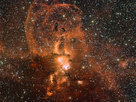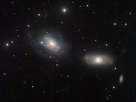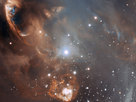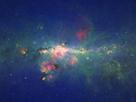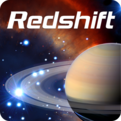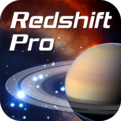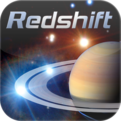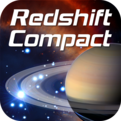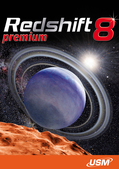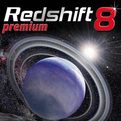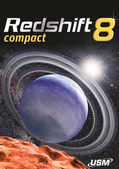Pandora’s Cluster
A Galactic Crash Investigation
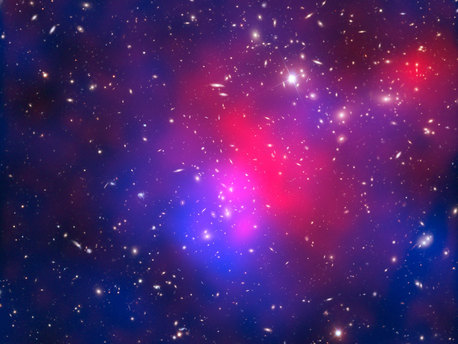 © ESO
|
- » 1 - A Galactic Crash Investigation
- » 2 - Pandora’s Cluster phenomena
A Galactic Crash Investigation
Julian Merten, one of the lead scientists for this new study of cluster Abell 2744, explains: “Like a crash investigator piecing together the cause of an accident, we can use observations of these cosmic pile-ups to reconstruct events that happened over a period of hundreds of millions of years. This can reveal how structures form in the Universe, and how different types of matter interact with each other when they are smashed together.”
“We nicknamed it Pandora’s Cluster because so many different and strange phenomena were unleashed by the collision. Some of these phenomena had never been seen before,” adds Renato Dupke, another member of the team.
Abell 2744 has now been studied in more detail than ever before by combining data from ESO’s Very Large Telescope, the Japanese Subaru telescope, the NASA/ESA Hubble Space Telescope, and NASA’s Chandra X-Ray Observatory.
The galaxies in the cluster are clearly visible in the VLT and Hubble images. Although the galaxies are bright they make up less than 5% of the mass there. The rest is gas (around 20%), which is so hot that it shines only in X-rays, and dark matter (around 75%), which is completely invisible. To understand what was going on in the collision the team needed to map the positions of all three types of matter in Abell 2744.
Dark matter is particularly elusive as it does not emit, absorb or reflect light (hence its name), but only makes itself apparent through its gravitational attraction. To pinpoint the location of this mysterious substance the team exploited a phenomenon known as gravitational lensing. This is the bending of light rays from distant galaxies as they pass through the gravitational fields present in the cluster. The result is a series of telltale distortions in the images of galaxies in the background of the VLT and Hubble observations. By carefully plotting the way that these images are distorted, it is possible to map quite accurately where the hidden mass — and hence the dark matter — actually lies.
Pandora’s Cluster
A Galactic Crash Investigation
 © ESO
|
- » 1 - A Galactic Crash Investigation
- » 2 - Pandora’s Cluster phenomena
A Galactic Crash Investigation
Julian Merten, one of the lead scientists for this new study of cluster Abell 2744, explains: “Like a crash investigator piecing together the cause of an accident, we can use observations of these cosmic pile-ups to reconstruct events that happened over a period of hundreds of millions of years. This can reveal how structures form in the Universe, and how different types of matter interact with each other when they are smashed together.”
“We nicknamed it Pandora’s Cluster because so many different and strange phenomena were unleashed by the collision. Some of these phenomena had never been seen before,” adds Renato Dupke, another member of the team.
Abell 2744 has now been studied in more detail than ever before by combining data from ESO’s Very Large Telescope, the Japanese Subaru telescope, the NASA/ESA Hubble Space Telescope, and NASA’s Chandra X-Ray Observatory.
The galaxies in the cluster are clearly visible in the VLT and Hubble images. Although the galaxies are bright they make up less than 5% of the mass there. The rest is gas (around 20%), which is so hot that it shines only in X-rays, and dark matter (around 75%), which is completely invisible. To understand what was going on in the collision the team needed to map the positions of all three types of matter in Abell 2744.
Dark matter is particularly elusive as it does not emit, absorb or reflect light (hence its name), but only makes itself apparent through its gravitational attraction. To pinpoint the location of this mysterious substance the team exploited a phenomenon known as gravitational lensing. This is the bending of light rays from distant galaxies as they pass through the gravitational fields present in the cluster. The result is a series of telltale distortions in the images of galaxies in the background of the VLT and Hubble observations. By carefully plotting the way that these images are distorted, it is possible to map quite accurately where the hidden mass — and hence the dark matter — actually lies.






